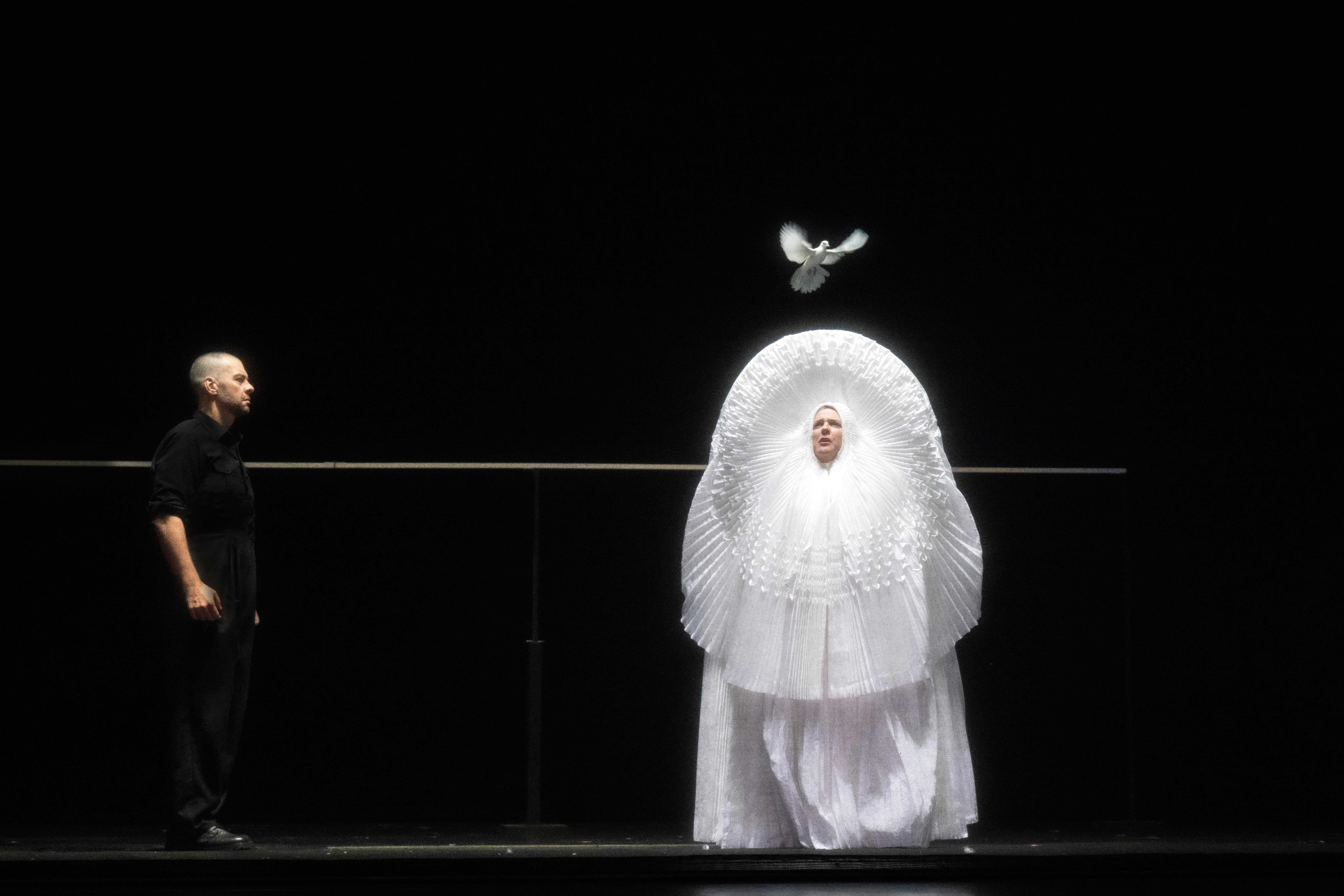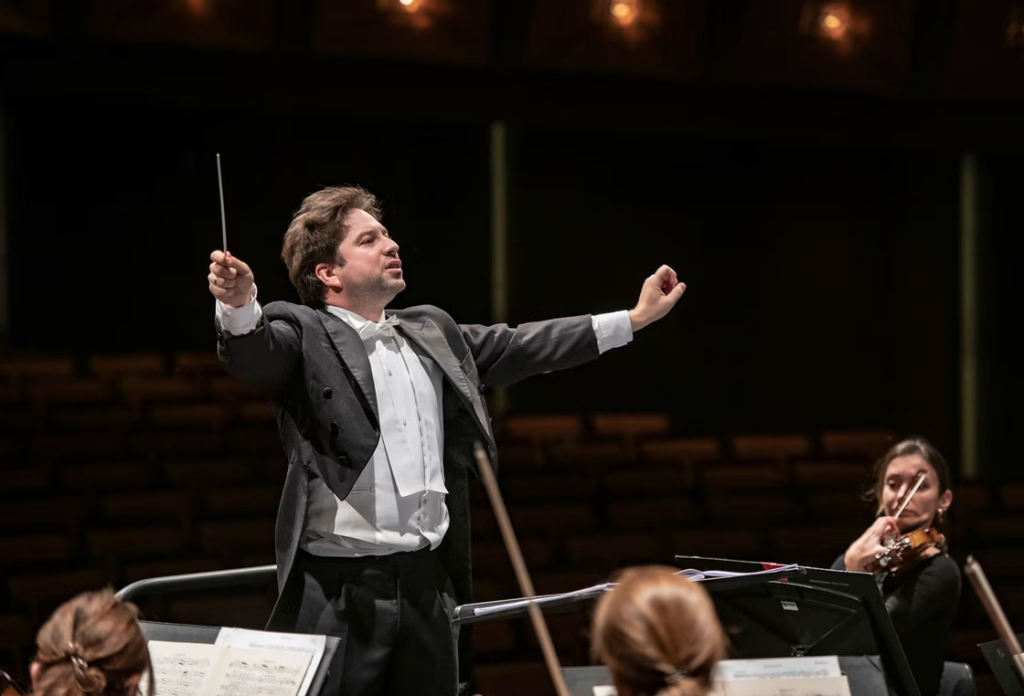Last time at La Monnaie Das Rheingold (1869) left us with the creation of Valhalla. In Die Walküre (1870) we are brought back to earth. Director Romeo Castellucci described this opera as the most humane one of the tetralogy. But is it really like this?
Together with conductor Alain Altinoglu, bass Gábor Bretz (Wotan), contralto Marie-Nicole Lemieux (Fricka), and the extensive cast, he brings the first day of Der Ring des Nibelungen (1853-1874) to life. And with this the battle for the divine.
Divine greed versus human desire
Das Rheingold and its successor are like two sides of the same coin. The first introduces us to the beginning of the end, this thanks Wotan’s greed. The ring here is a symbol of the unholy hatred for feelings. Wotan alludes to this in Die Walküre. Telling his favourite daughter, the Valkyrie Brünnhilde (soprano Ingela Brimberg), about how fatal his desire has proven to be – the gods will perish. The stolen Rheingold remains accursed.
Die Walküre does not only touch on the topic of greed versus altruism – Castellucci likes the parallel between Wotan and Buddha –, but it also talks of duty versus selfish desire. The humans here, the Wälsingen-twin Siegmund (tenor Peter Wedd) and Sieglinde (soprano Nadja Stefanoff), are the result of Wotan’s shameful lust. This angers Fricka – his wife and the goddess of matrimony. A role fantastically interpreted by Lemieux. There is something foul about the lovebirds: there is the blood bond on one side, and there Sieglinde’s (unhappy) marital status on the other. Viewing this in a more modern matrimonial perspective gives the production somewhat of an edge. For Fricka the answer is clear: they must pay a dire price – for her honour as a goddess, but also as a woman scorned. The theme of the tormented Ürgoddess relinquishing her scorn on the consequence (the twins), and not the perpetrator (Wotan), is a tale as old as time (or Hera)!
So, this production presents itself as a conflict between these philosophical motives. This makes this performance somewhat more emotional accessible than Das Rheingold. The gods have conflict with the human world. In between there is a third player: the Valkyrie Brünnhilde. She is the interpretative division between worlds – the core of the opera personified. She represents the conflicts between honour, emotions, and the consequences of it all.
Hojotoho!
The production of La Monnaie and Castellucci was presented with the challenge of translating is playful, kinetic – yet strongly symbolic – director’s style for the stage. It moved from the more divining Das Rheingold to the eventful Die Walküre. Did they succeed? For me, as a critic, the answer is mainly yes. There was only one moment that needed kinetic silence: the infamous ride of the Valkyries. This was needed to let the vocal techniques of the Valkyrie-cast shine. This part doesn’t need more, but less. And let me say that these Valkyries shone when it came to their vocal prowess and colour. They were all forceful in solo, and in unisono. The resulting goosebumps deserve a well-meant “brava, Valkyries!”
In this production the women owned the show. They were like strong mists shining different types of rainbow-colours on the stage. Lemieux as Fricka, in the short moment she had there, was a force of godly anger and divinity. Her short burst was a vocally strong moment. Fricka, and her demands, remained present throughout the opera. Stefanoff as Sieglinde – who is a victim of fate – has a very souple glide from high to low, her breath control gives her different vocal colours time to shine. Brimberg as Brünnhilde did honour to her part – both vocally, and dramatically. Her full dark voice fits the ironclad, yet emotionally touched, Valkyrie perfectly. She, and her Hojotoho!”-cry, were the perfect storm. And with here fatal destiny (on the rock) she showed her vocal vulnerability. Brimberg and her voice brought Brünnhilde to life.
I certainly do not want to downplay the male cast members – they had their strong displays on stage as well -, but this Die Walküre was that of the women. The production: a perfect display to hear and witness. I wish for the upcoming Siegfried the same musical success story. Bravo!
- WHAT: Die Walküre (1870) by Richard Wagner.
- WHO: Alain Altinoglu (conductor), Romeo Castellucci (director), Christian Longchamp (dramaturgy), Peter Wedd, Ante Jerkunica Gábor Bretz, Nadja Stefanoff, Ingela Brimberg, Marie-Nicole Lemieux, Karen Vermeiren, Tineke van Ingelgem, Polly Leech, Lotte Verstaen, Katie Lowe, Marie-Andrée Bouchard-Lesieur, Iris van Wijnen, Christel Loetzsch, Symfonieorkest van de Munt.
- WHERE: De Munt/La Monnaie, Brussels.
- WHEN: from 21 January 2024 till 11 February 2024; seen on the 21st of January 2024









